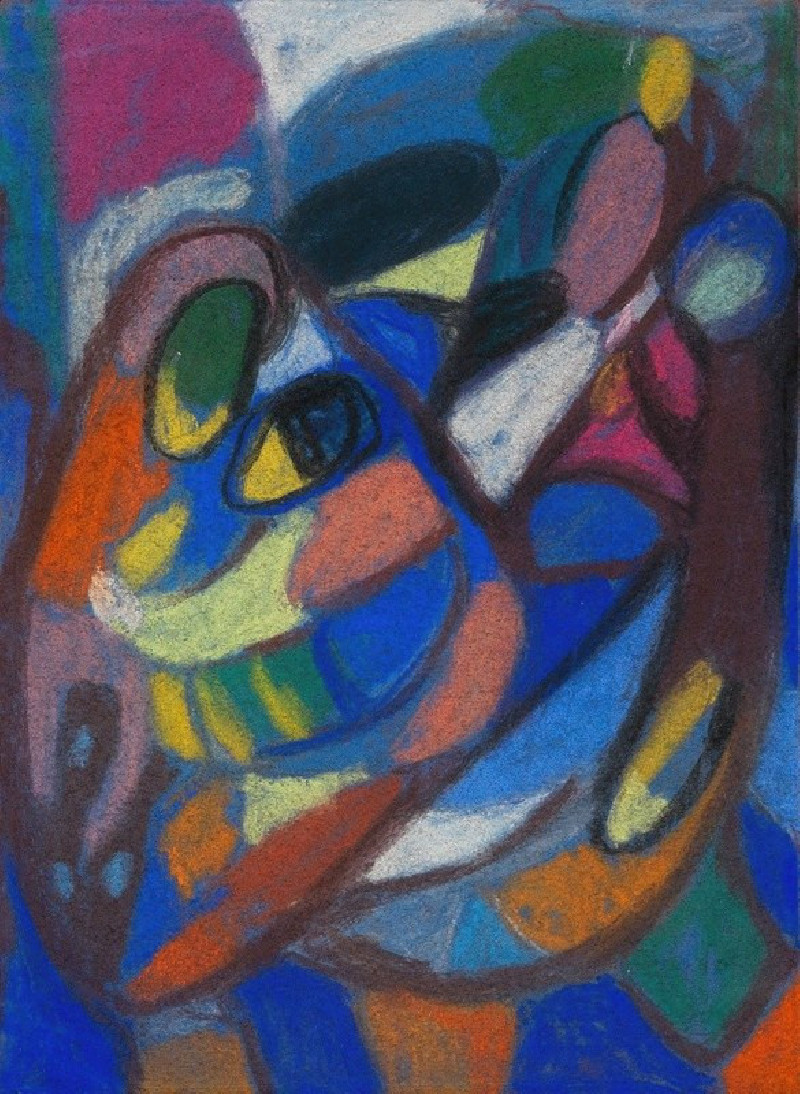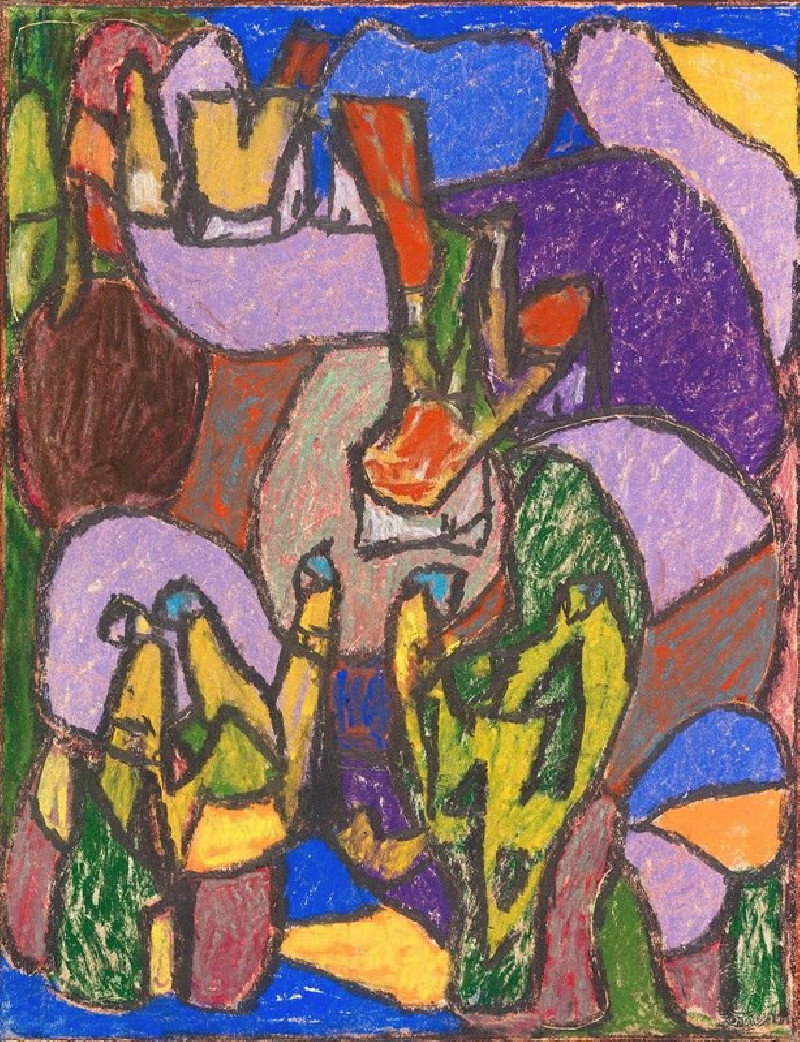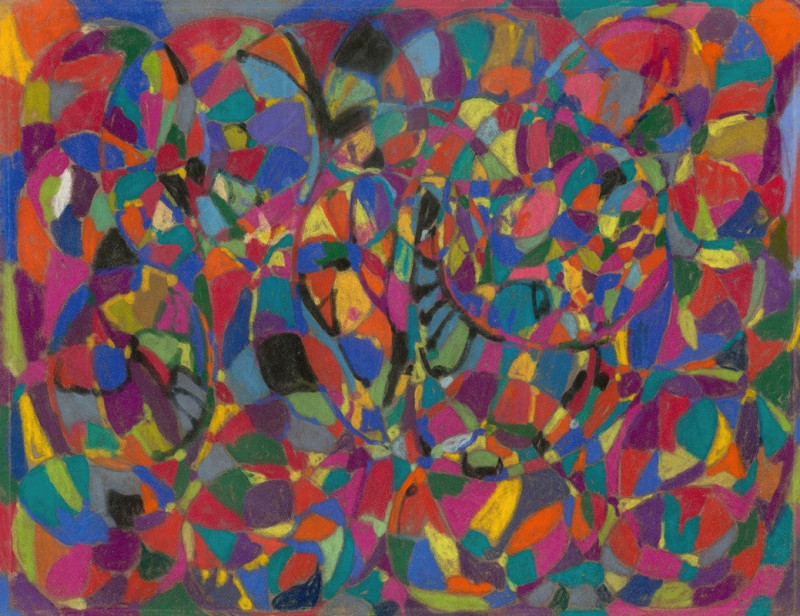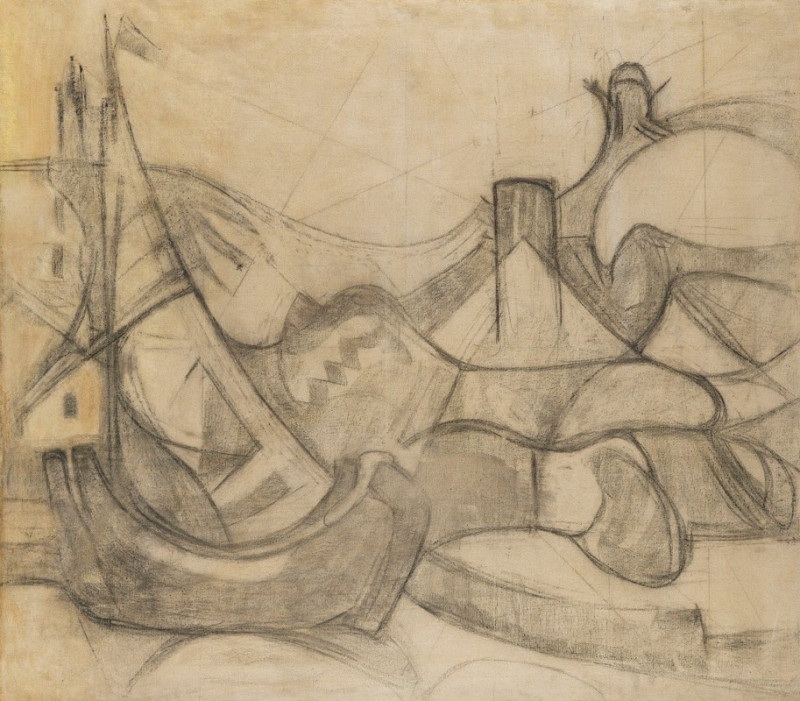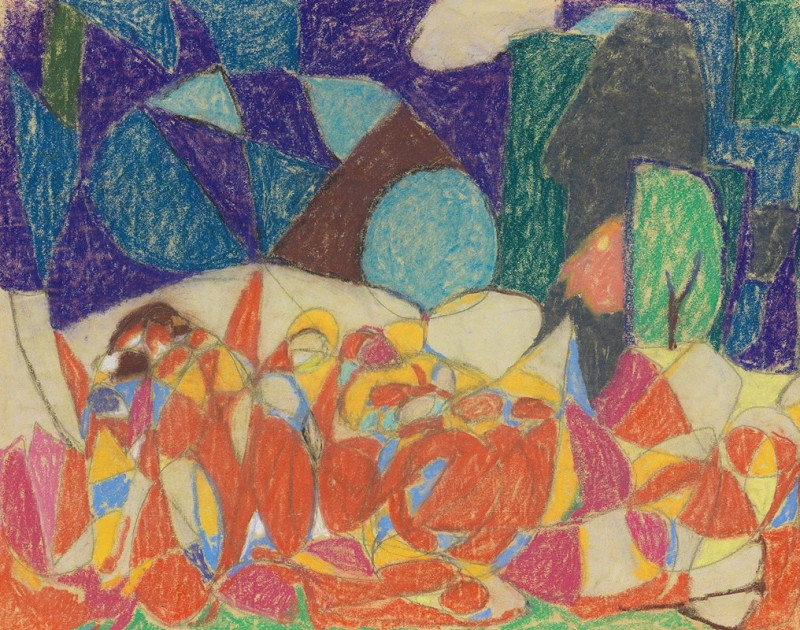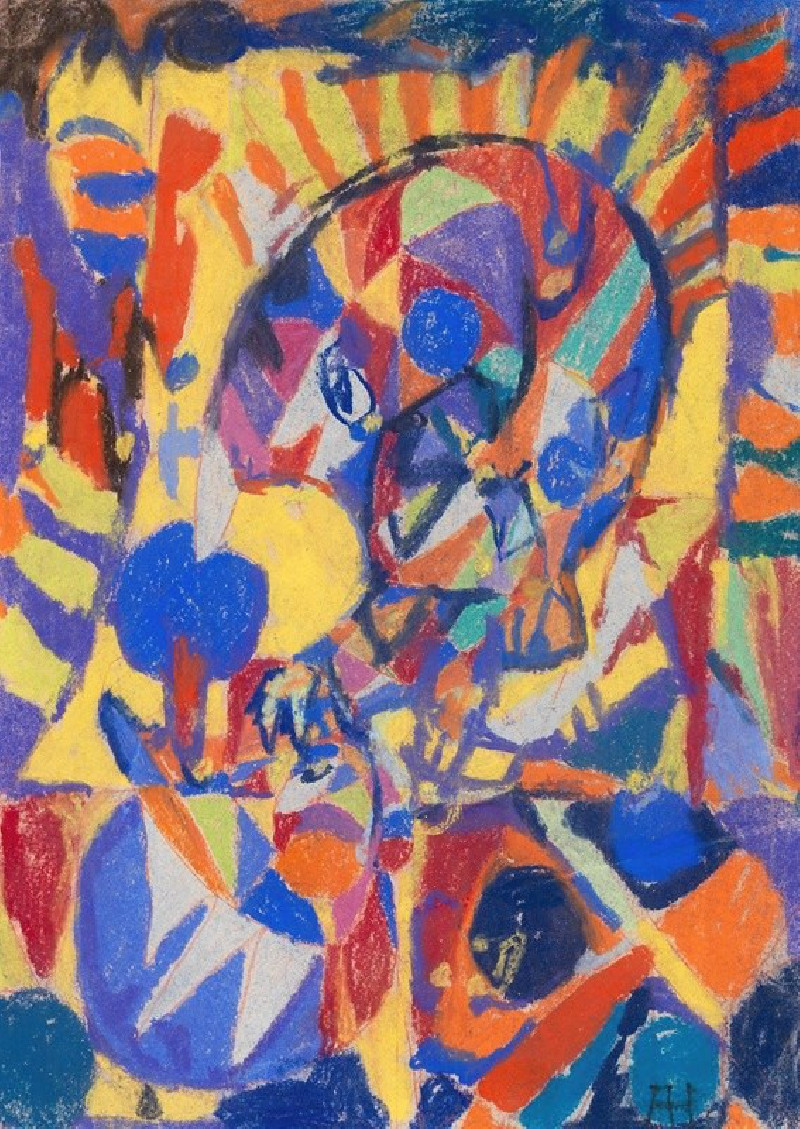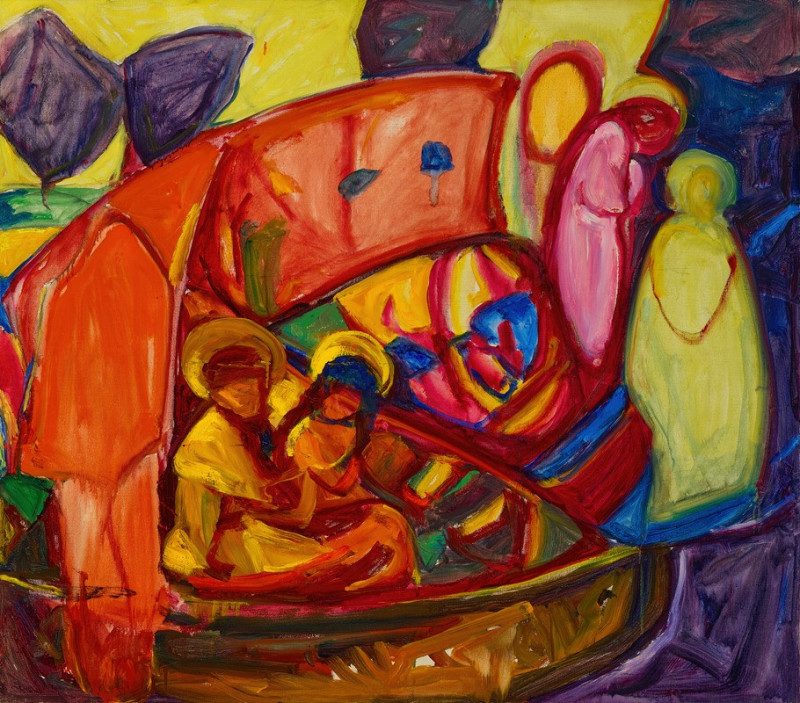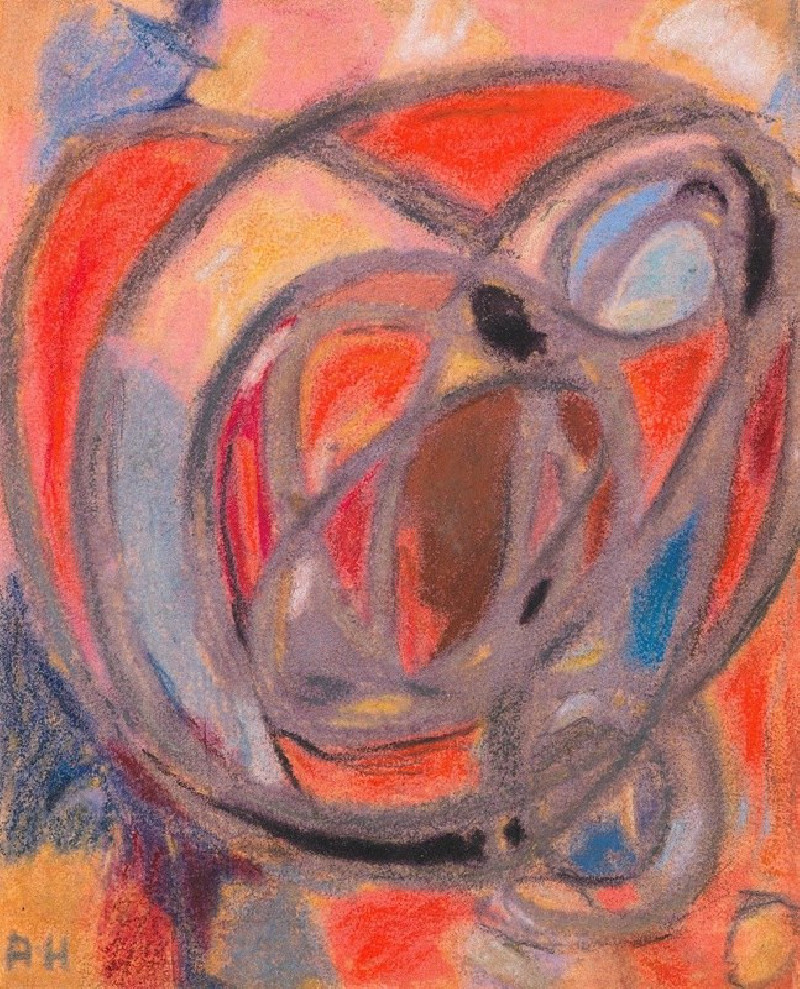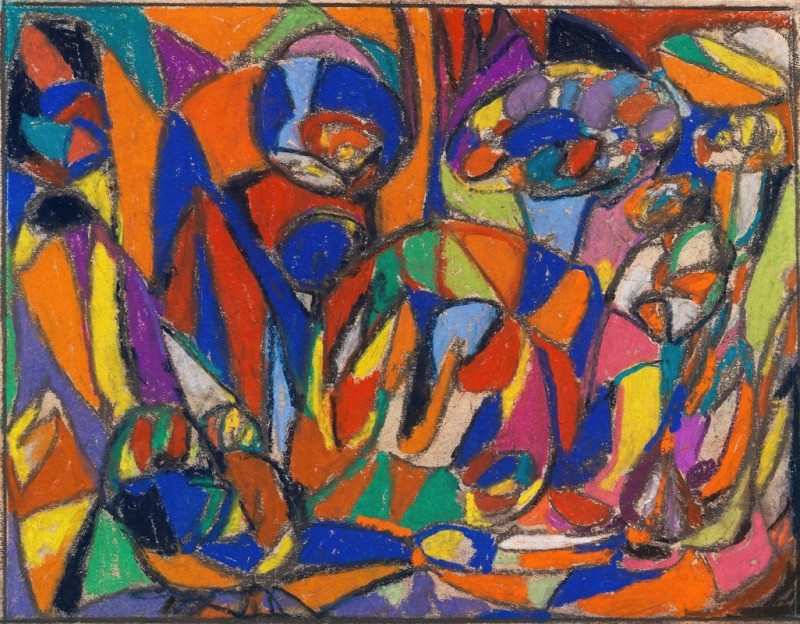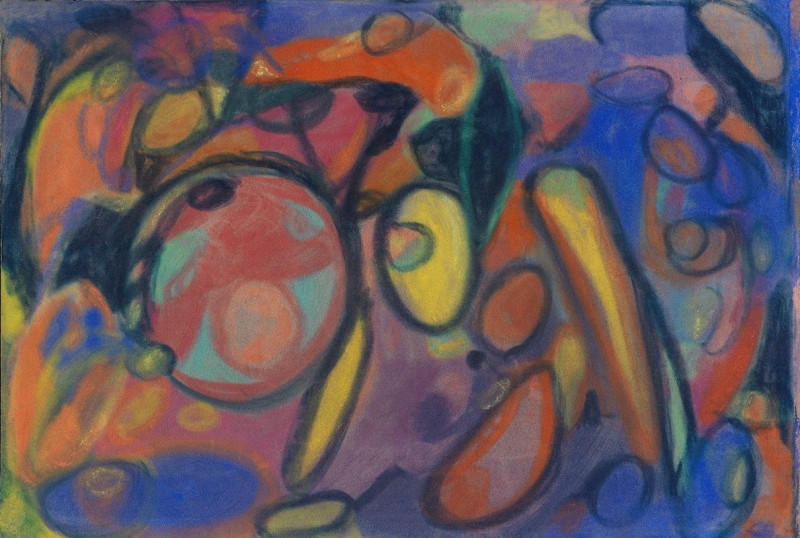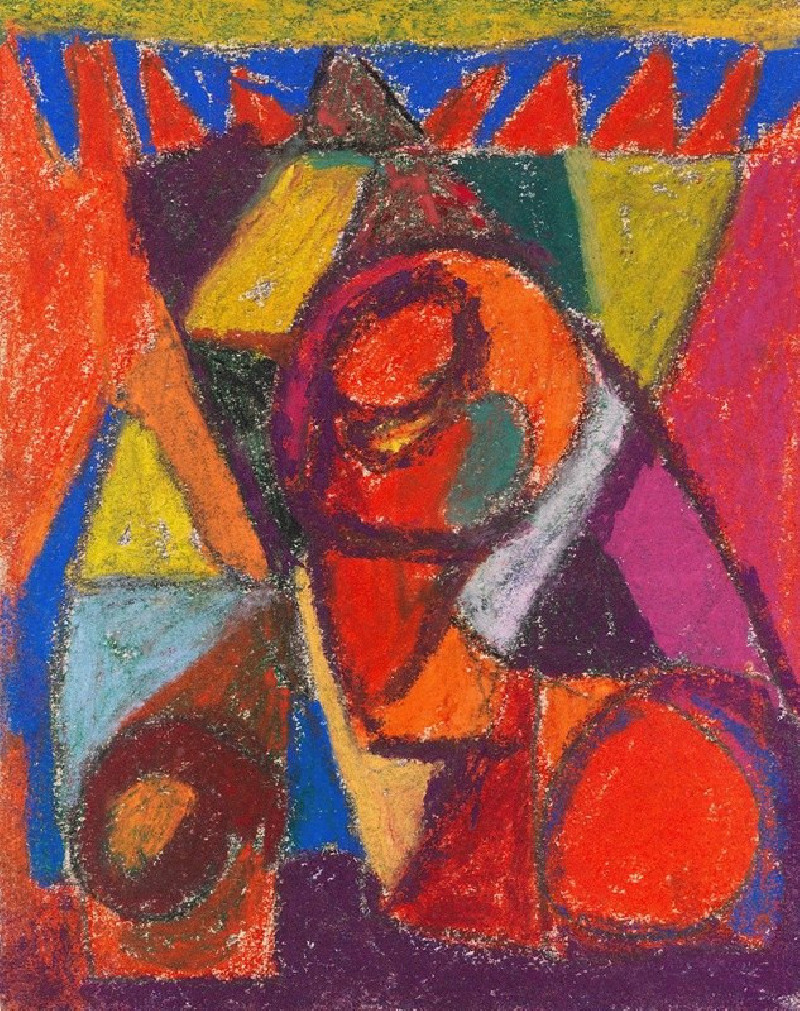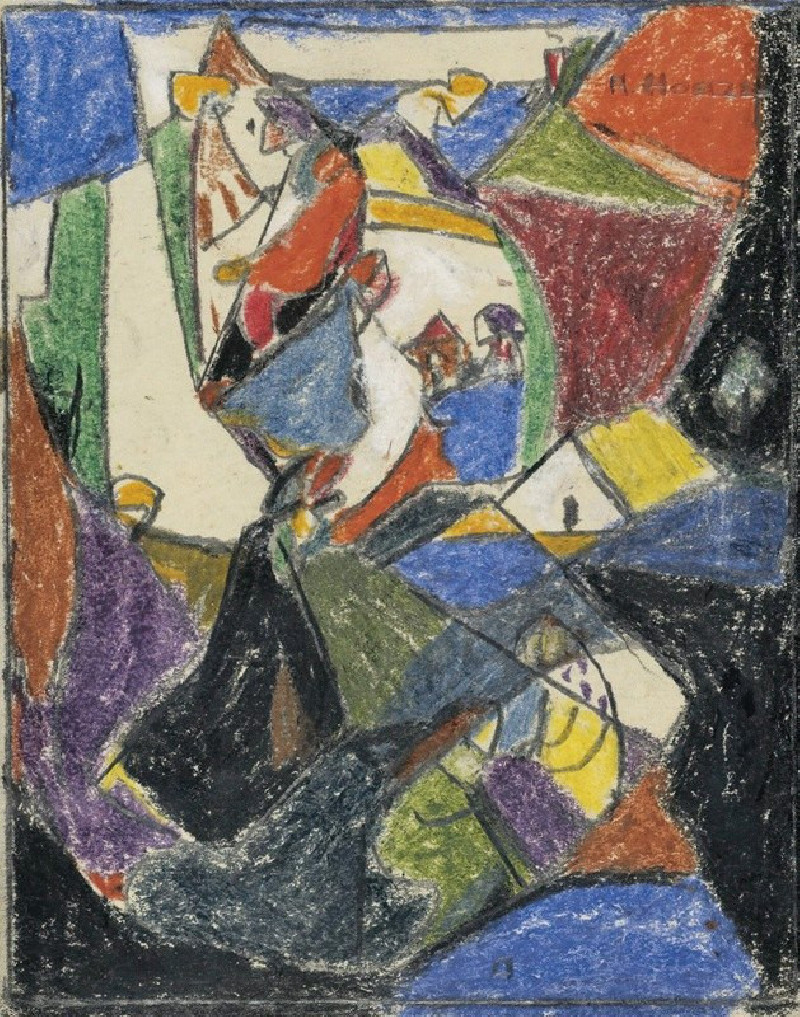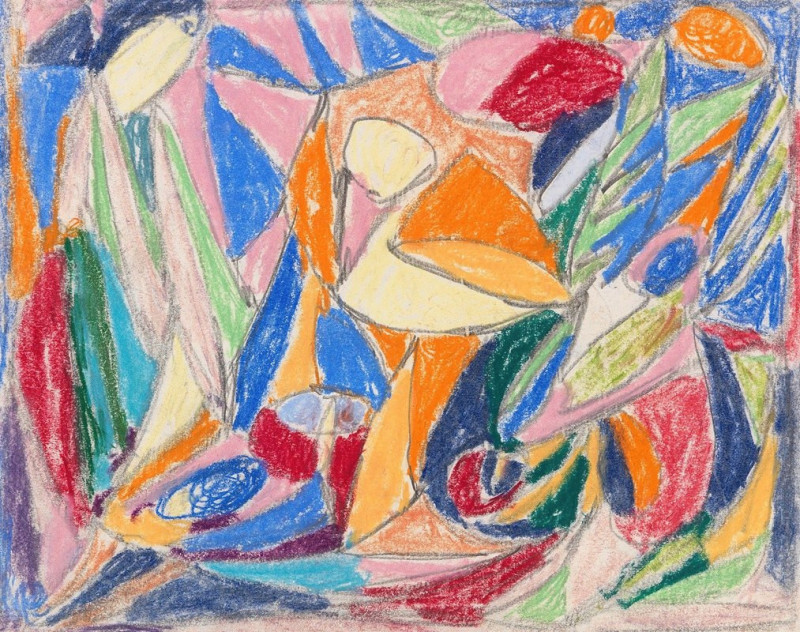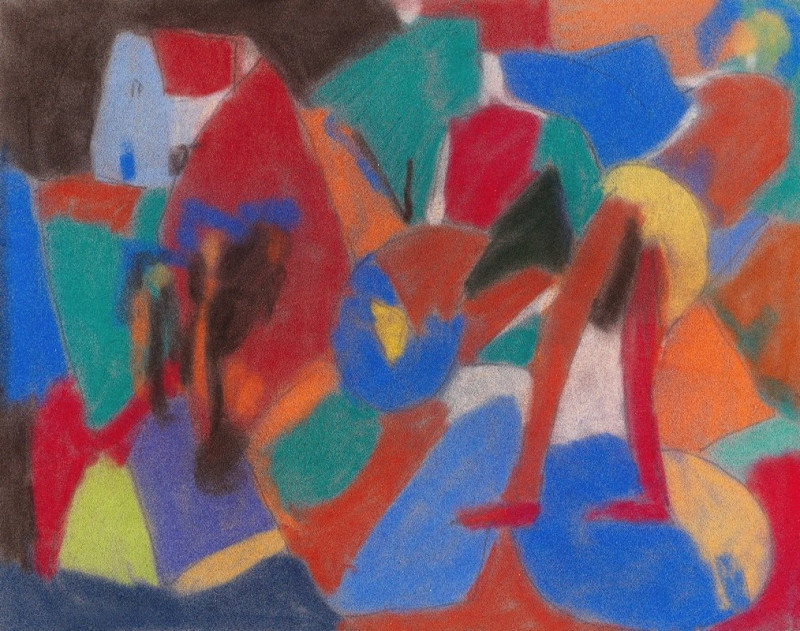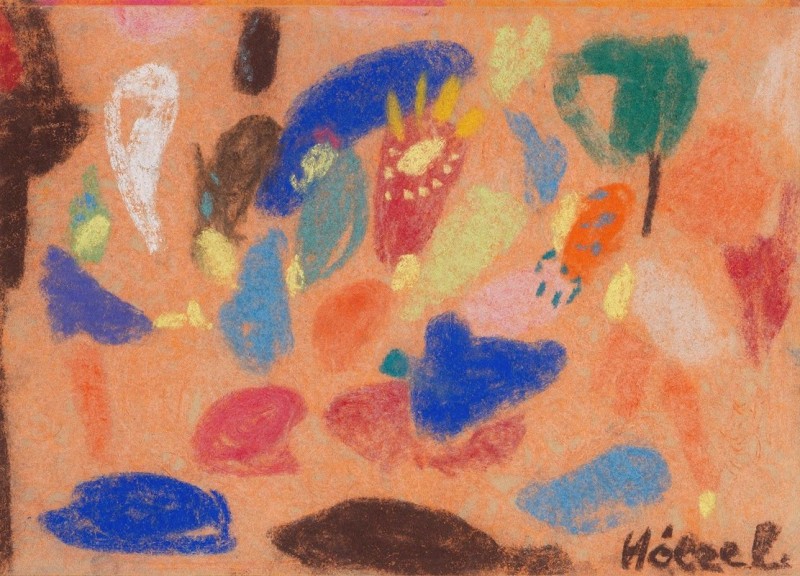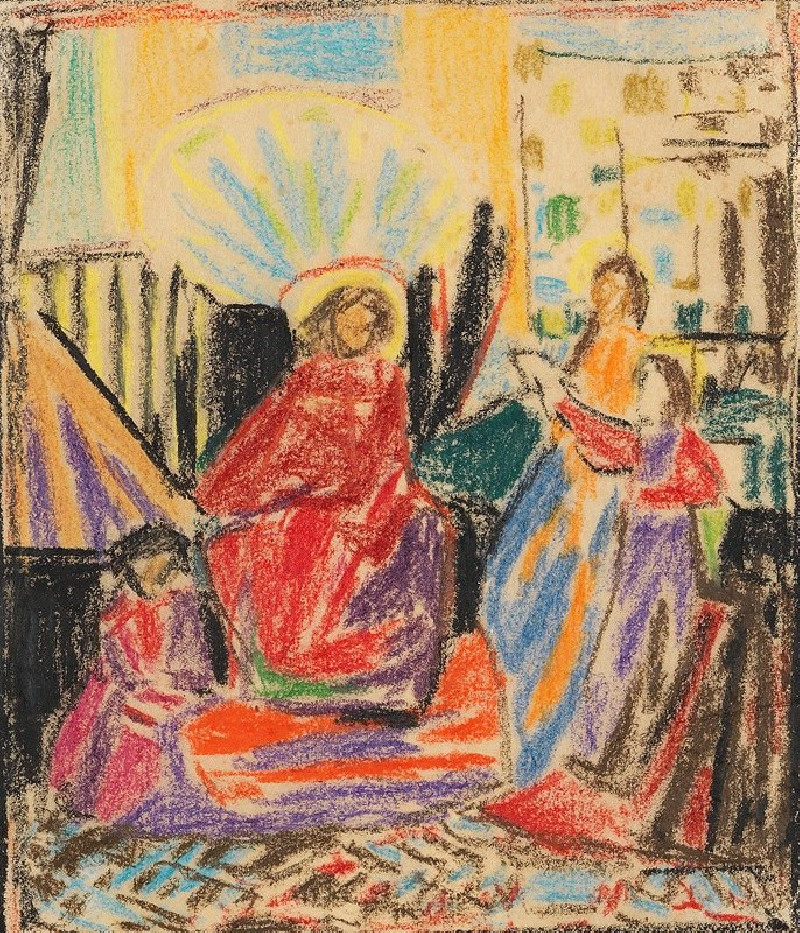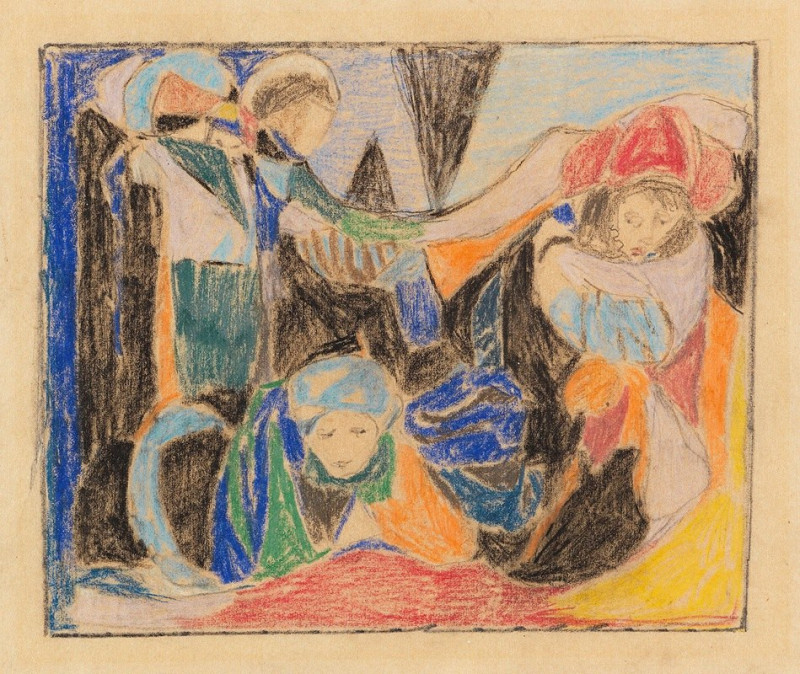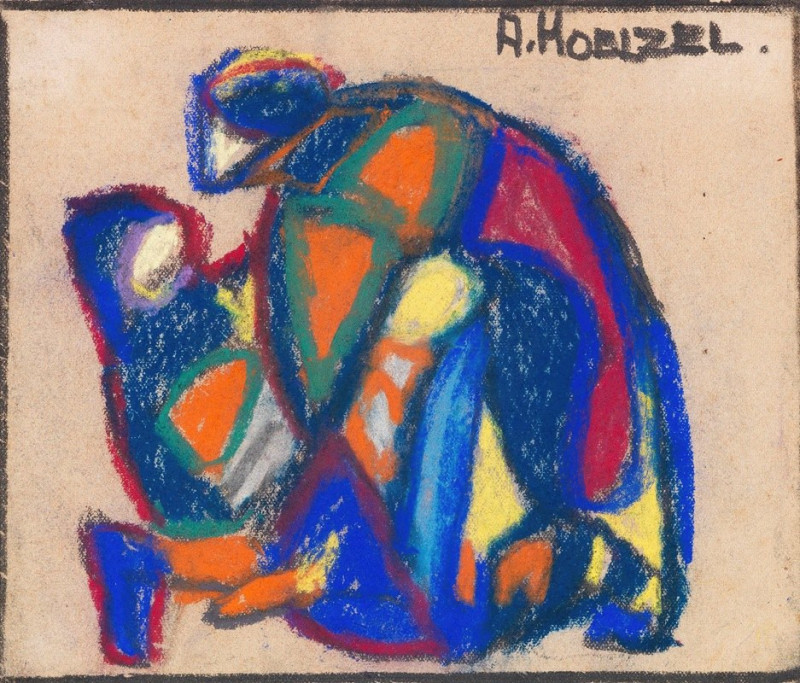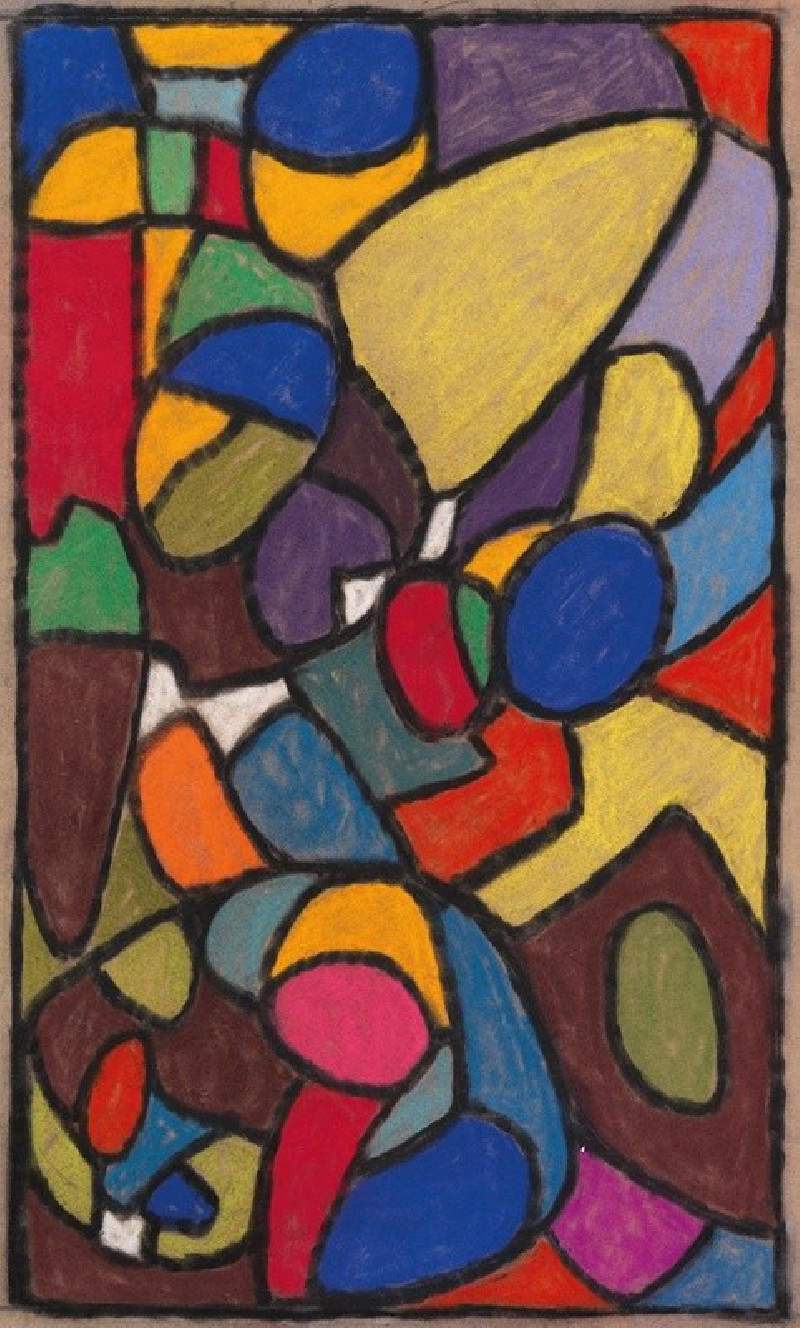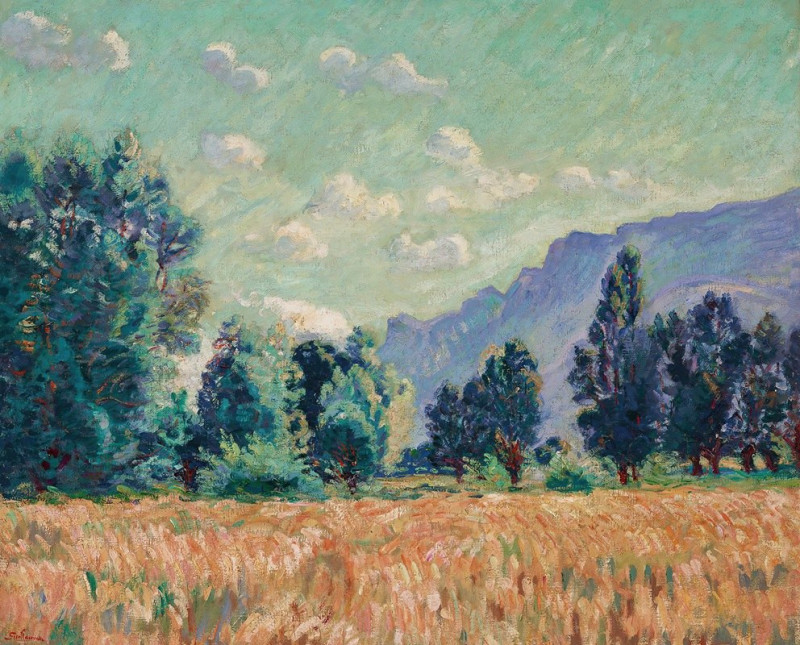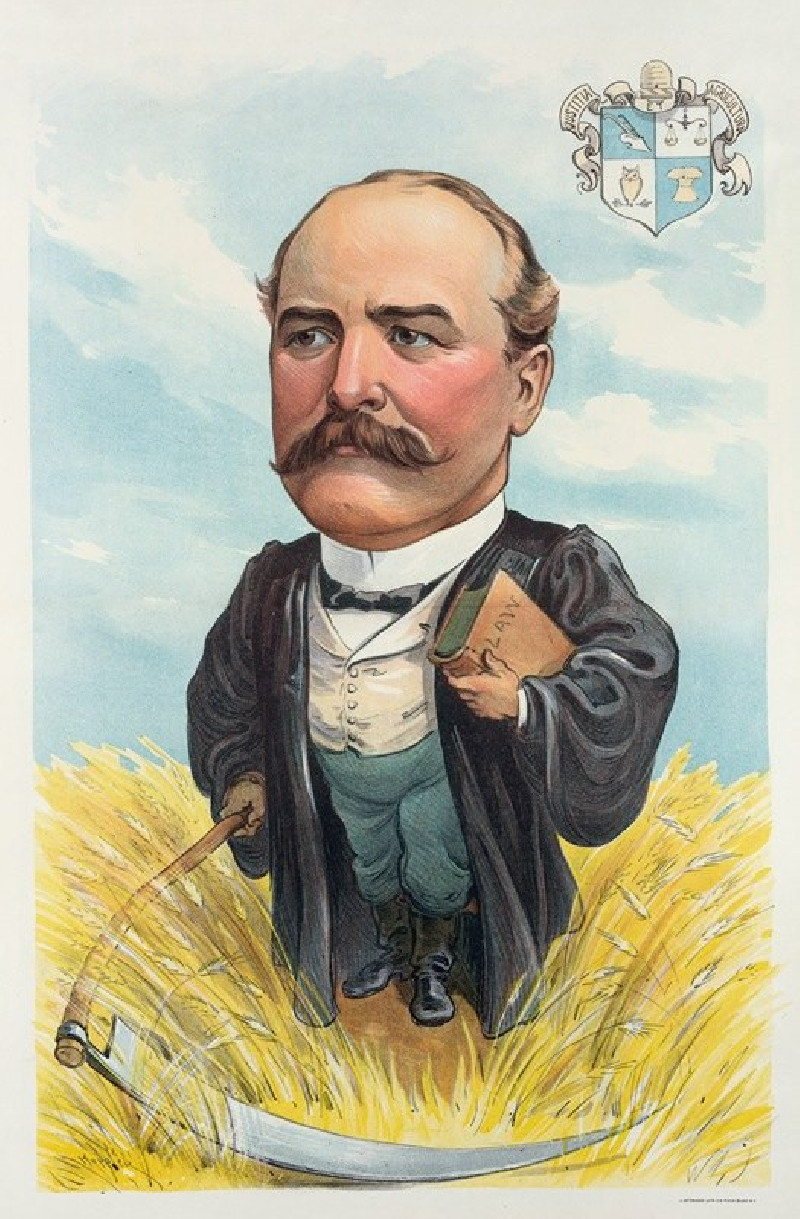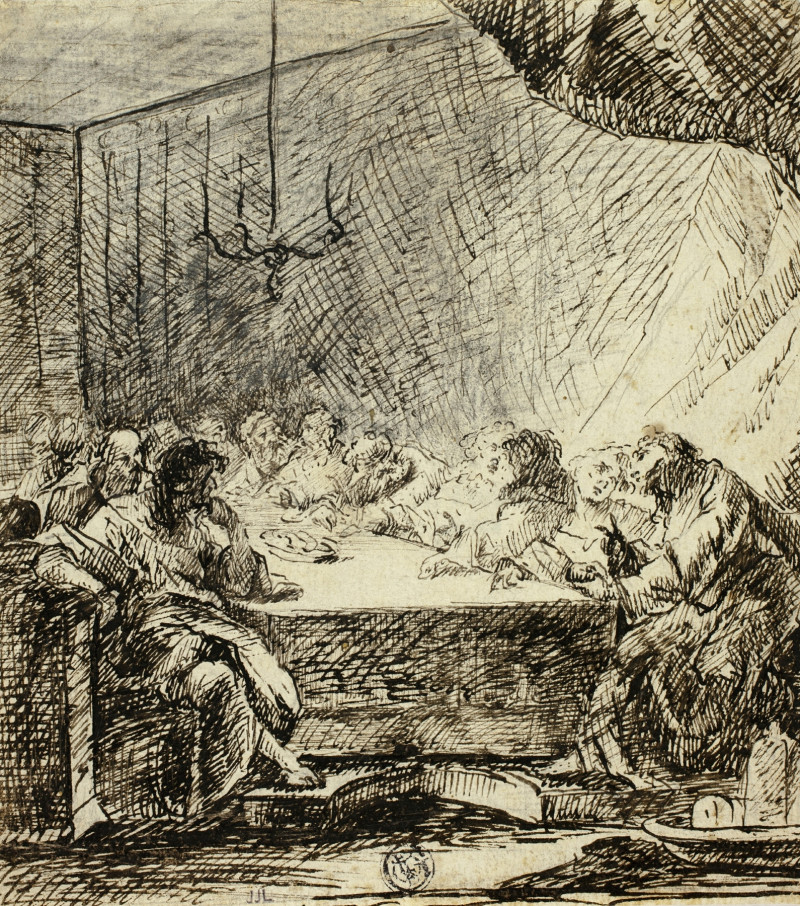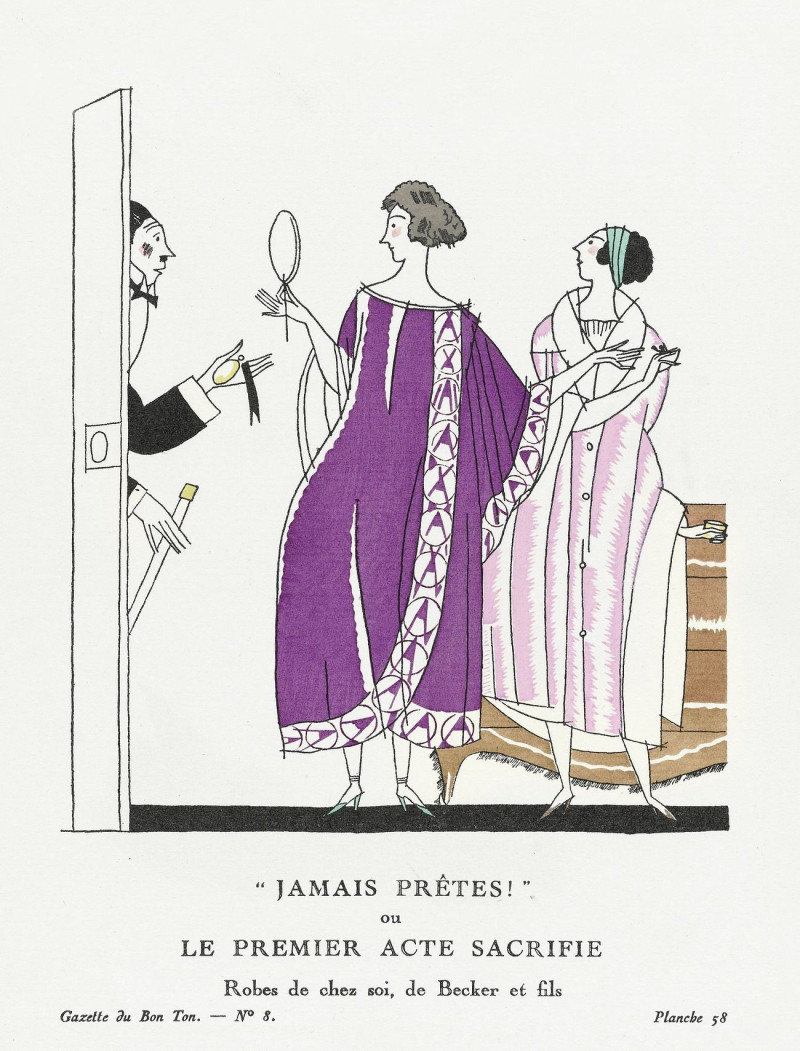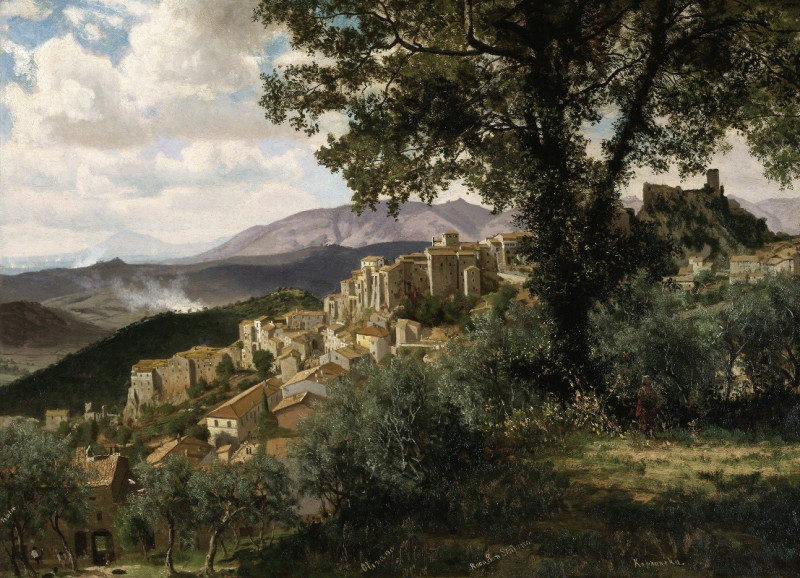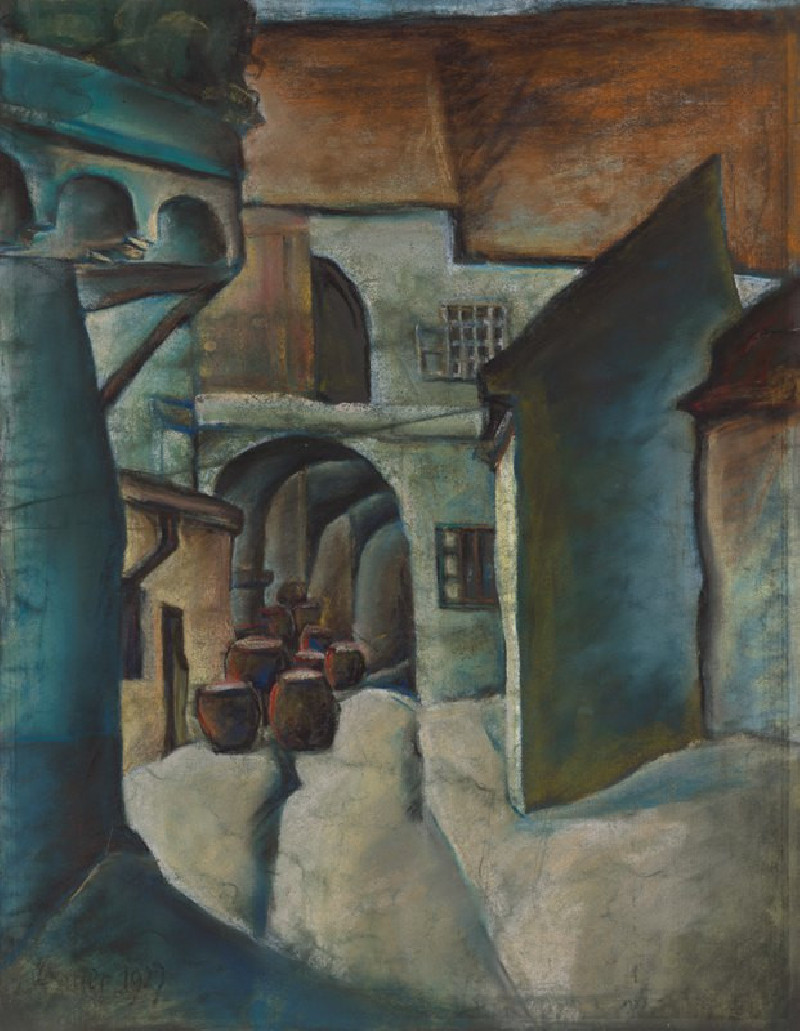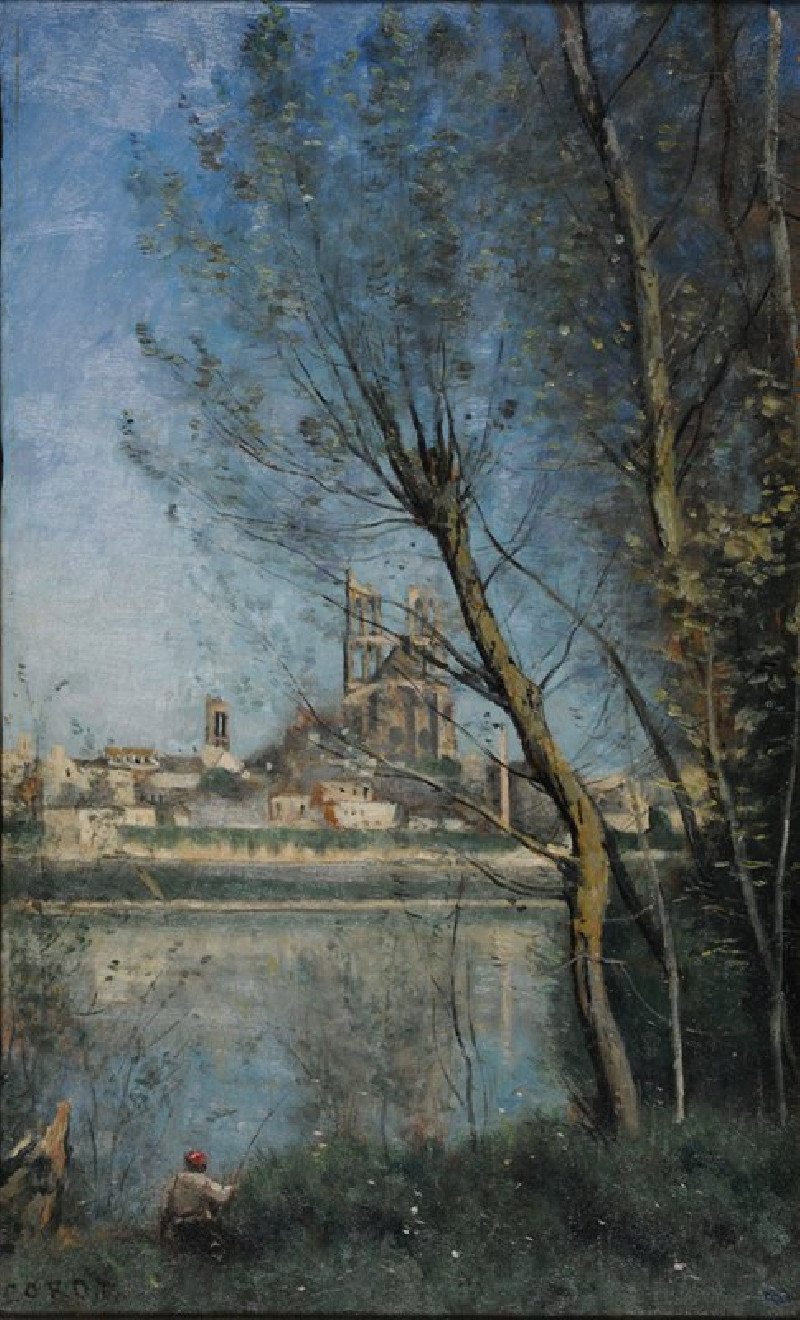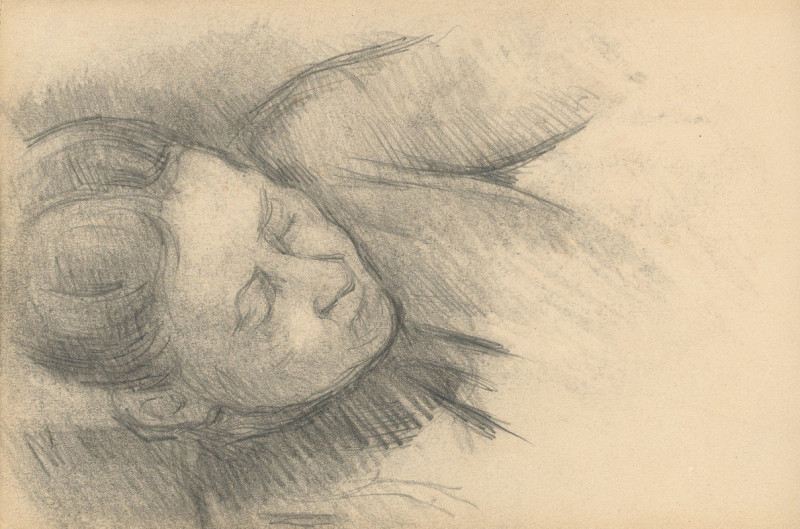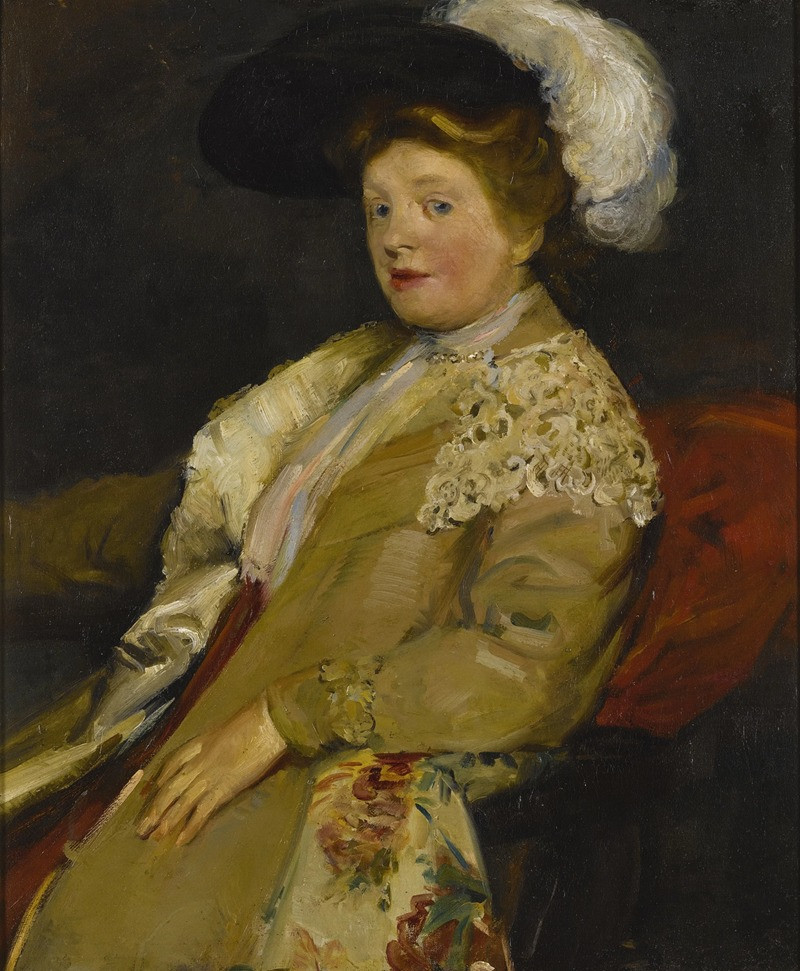Figurenkomposition (1920-30)
Technique: Giclée quality print
Recommended by our customers
More about this artwork
Adolf Hölzel's painting "Figurenkomposition," created in the era of the 1920s to 1930s, offers a vibrant and abstract exploration of forms and colors that transcends traditional figurative art. Regarded as a pivotal piece in Hölzel's oeuvre, the artwork embodies the transition towards modern abstract expression by fragmenting figures and scenes into a symphony of shapes.Upon viewing "Figurenkomposition," one is drawn into a kaleidoscope of intense and contrasting colors. Featuring bold hues of red, blue, green, yellow, and more, the painting vibrates with dynamic energy. The use of colors not only enriches the visual experience but also evokes various emotional responses, which is central to understanding Hölzel's intent.The composition appears as a chaotic interplay of abstract and geometric forms. Closer inspection, however, reveals figures interlocking in a complex, almost dance-like arrangement. These figures, which might initially elude recognition due to the abstract style, evoke a sense of interaction and movement, suggesting a narrative frozen in a perpetual motion.Hölzel, a significant influencer in the development of modern art in Germany, uses "Figurenkomposition" to challenge the viewers' perception of reality. The painting invites audiences to interpret the scene, guided by their encounters with color, form, and the subtle hints of figurative elements.This artwork not only represents a key moment in Adolf Hölzel's artistic journey but also serves as a testament to the transformative power of abstraction in early 20th-century art.


